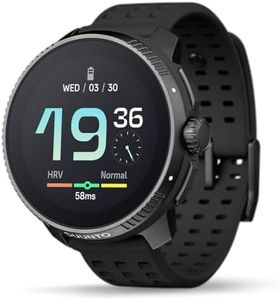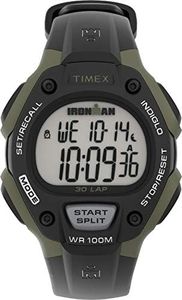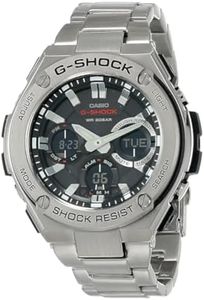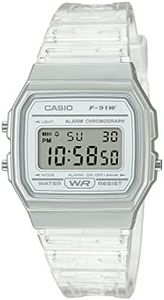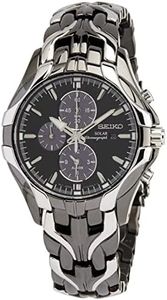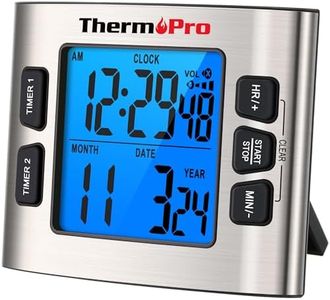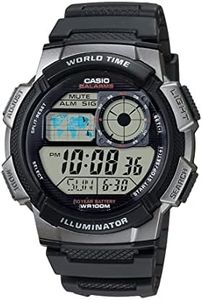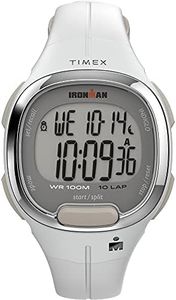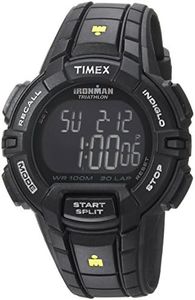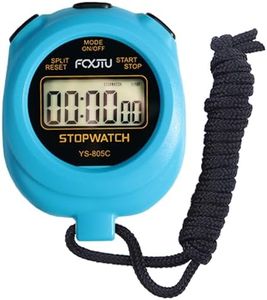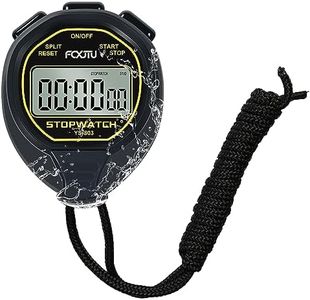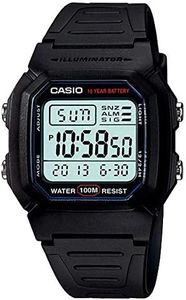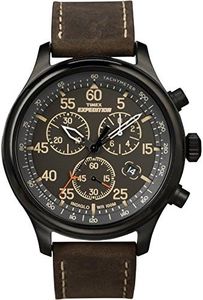We Use CookiesWe use cookies to enhance the security, performance,
functionality and for analytical and promotional activities. By continuing to browse this site you
are agreeing to our privacy policy
10 Best stopwatches
From leading brands and best sellers available on the web.Buying Guide for the Best stopwatches
When choosing a stopwatch, it's important to focus on how and where you plan to use it. Stopwatches come in a variety of types, from simple hand-held models for sports and fitness to more advanced digital ones for scientific or professional timing. Start by thinking about your primary needs: is it for timing laps while running, managing experiments, coaching, or general everyday use? Once you have a clear picture of your main tasks, you can narrow down the most important features and specifications for your ideal stopwatch.Display TypeThe display type refers to whether the stopwatch is analog (with physical hands and dials) or digital (with an LCD or LED screen showing numbers). Digital stopwatches are more common and typically easier to read, especially when you need precise time measurements down to the hundredth of a second. Analog stopwatches might appeal if you prefer a traditional look and feel, or don’t need to measure split seconds. For sports, fitness, and most modern uses, digital is generally the better option because of its clarity and extra functions.
Measurement PrecisionThis spec indicates how exact the stopwatch’s timing is, usually measured in seconds, tenths, or hundredths of a second. The higher the precision (for example, measuring to 0.01 second), the better for sports and activities that require very detailed timing. Basic stopwatches that only measure to the nearest second are sufficient for casual timing, like cooking or classroom use. For athletic or laboratory uses, look for a stopwatch that can measure to at least 0.01 second.
Lap and Split Timing FunctionsLap and split timing allow you to record intermediate times while the stopwatch continues running. Lap timing tracks the time for each segment (like each lap in a race), while split timing shows the total elapsed time at various points. These functions are valuable for sports training or events where you need to see timing for parts of an activity, not just the final result. If you only need to time a single event, you can skip this feature. If you want to track multiple segments, prioritize this function.
Memory RecallMemory recall refers to the stopwatch's ability to store previous times, such as lap or split results, for later review. This is particularly useful for athletes, coaches, or scientists who need to analyze performance over multiple events or trials. Stopwatches may hold just a few times, or large sets of data. Decide how many results you need to keep—casual users may not need this at all, but if you’re tracking progress or need to review past timings, look for a model with larger memory capacity.
Durability and Water ResistanceDurability is about how well the stopwatch withstands drops, impacts, or heavy use. Water resistance ensures it can be safely used outdoors, in the rain, or poolside without getting damaged. These qualities are important if you’re using the stopwatch in sports, fieldwork, or harsh environments. For indoor or gentle use, this may matter less. Pick a sturdy, water-resistant stopwatch if your activities are active or outdoors, and a basic one for a classroom or office.
Ease of Use and Button LayoutEase of use covers how intuitive the stopwatch is, including how clearly marked and accessible the buttons are. Simple controls are essential if you need to operate the stopwatch quickly or in stressful situations, such as in sports competitions or timing meetings. Complicated layouts with small or tough buttons can hinder performance. Consider your comfort and how quickly you need to operate the device; if you expect to use it frequently and rapidly, look for clear, well-spaced buttons and an easy-to-read display.
